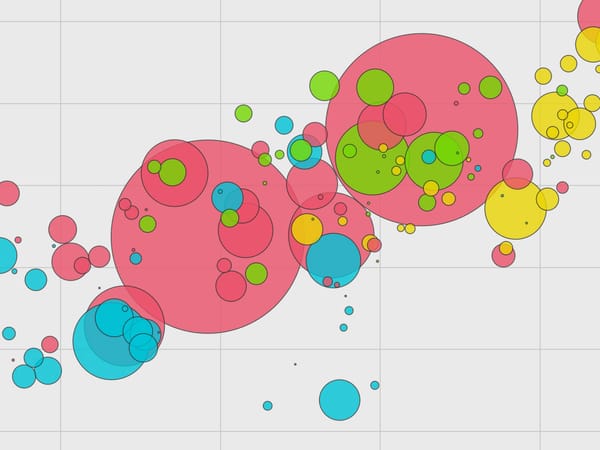Showing Up
We are what we attend to

Pull to refresh, created by developer Loren Brichter in 2008, may be the most consequential design detail of the twenty-first century. When paired with the endless content available on giant social-media platforms, its elegant simplicity became an addictive habit for millions, possibly billions. That combination—gesture plus network—unintentionally taps in to something from deep in human history: the need to scan the horizon for new information. And it helped create what has been most famously been described as a “social dilemma,” or what others call a crisis of attention.
As an editor and writer, as a technology enthusiast, and, to be honest, as someone whose ability to focus has diminished in the past decade, I’ve followed the attention discourse. I’m in search of both diagnosis and healing. The voice I’ve come to rely on most belongs to L.M. Sacasas, who writes the newsletter and who recently spoke about this subject on the Vox podcast The Gray Area (transcript here). In that conversation, Sacasas builds on a reframing he wrote about early this year: “Attention and attending are etymologically related to the Latin word attendere, which suggested among other things the idea of ‘stretching toward’ something. I like this way of thinking about attention, not as a possession in limited supply, theoretically quantifiable, and ready to be exploited, but rather as a capacity to actively engage the world—to stretch ourselves toward it, to reach for it, to care for it, indeed, to tend it.”
This reframing is a useful reminder that attention isn’t solely about focus, but is also about an openness to experience. Perhaps we can think of it instead as being in attendance, with that phrase’s bodily connotation. As 2022 comes to an end, I’m beginning to ask myself, where will I be in attendance in the year to come? To what will I attend?
At the same time, I’m wary of solutions to systemic problems or large cultural forces that emphasize individual responsibility. And attention discourse is narrowly focused on individuals: the fragmentation we experience is something we must solve through willpower, perhaps with a little help from distraction-fighting apps like Freedom, Forest, or RescueTime. So another question I’ll ask in the year to come, partly through subsequent editions of this newsletter, is how can we helpfully reorient what we attend to collectively? What ideas, people, and organizations point the way out of this so-called crisis?
Companies are, at their core, groups of people working together. We’ve become comfortable discussing their efforts in terms originally applied to individuals—for example, company values. So how might this notion of attendance apply to how companies show up in the world?
More than a decade ago, psychologist and writer Dan Ariely famously argued in the Harvard Business Review that “you are what you measure.” CEOs optimize for growth and profit because they’re measured by the company’s stock price, and those factors consistently drive the price upward. “If we want to change what CEOs care about, we should change what we measure.” If we want to change how a company shows up in the world, how can we create language that describes what it attends to?
In the meantime, as the writer Jasmine Wang has noted, “We must learn to attend without language for what it is we are experiencing. There are so many worlds that we do not have language for.” Once again: openness to experience. Sacasas came to his reframing of attention partly through the mid-twentieth-century philosophers Iris Murdoch and Simone Weil. Murdoch herself characterized Weil’s concept of attention as involving the development of a “just and loving gaze.”
Frontier Magazine, formally launching next month, will explore, through writing, interviews, podcasts, and more, how we can make joyful progress toward a better world, and in particular how businesses can accelerate that progression.
Flight Simulator

Above I mentioned several “distraction-fighting” apps. But my own preference is for Flight Simulator, which usefully reframes those tools’ strict tone. It’s not a distraction fighter, but rather an “ambient travel app” from Soft Works, a small software company run by artist and creative technologist Laurel Schwulst with Dan Brewster. It’s pitched as an “ode to airplane mode” that celebrates the “peaceful solitude of travel.” Set your phone to airplane mode, choose an airport to depart from, and after you select a real-world destination you’re encouraged to keep the phone in airplane mode for the duration of the actual flight. The whole thing feels more like an experiment (where can I fly today?) and an invitation to use my imagination than like a finger-wagging scold or straightjacket.
Good Links
👩🏻💻 Ezra Klein, who hosted Sacasas on his podcast last year, used the dramatic recent changes at Twitter as a springboard for his own thoughts on attention discourse. His theory, interestingly enough, involves the Quakers.
🤖 Noah Brier, cofounder of the smart newsletter Why Is This Interesting?, has just launched BrXnd, a fascinating attempt to leverage AI models—both image and text—to understand where marketing is headed. Is the answer Rice Krispies × Crocs?
🧑🏻🤝🏻🧑🏻 “I want belief in me to be decentralized enough that there are others who can think I’m good enough even when I don’t.” Molly Mielke, a writer and investor, on conviction.





